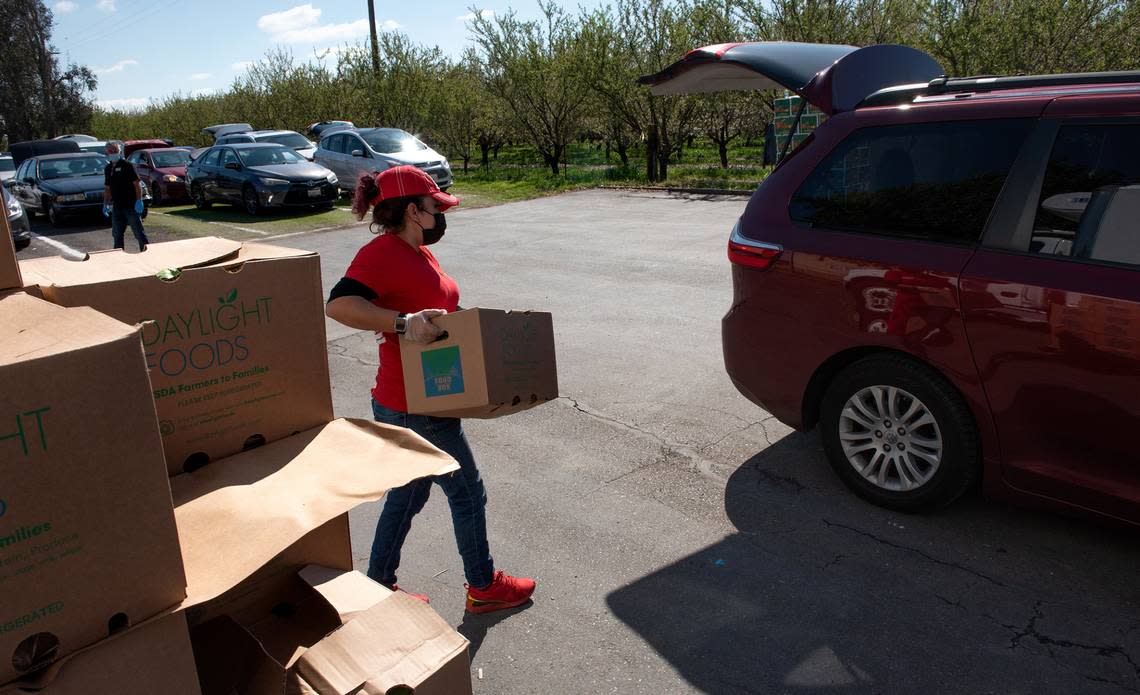Why did California’s poverty rate rise despite solid job market? Here’s what experts say

The state’s poverty rate rose last year despite a generally sound economy, a think tank reported.
The Oct. 24 report, from the Public Policy Institute of California, said 13.2% of households lived in poverty as of the first quarter of 2023. The rate was 11.7% in late 2021.
The authors said the uptick coincided with the end of income supports enacted amid COVID-19. Most prominent was an expanded child tax credit from the federal government, which added up to $1,600 per kid in 2021.
The report said the poverty rate was lower in Stanislaus and other San Joaquin Valley counties than the state average. That was mainly because the region has lower housing costs compared with the especially pricey coastal counties. Many Valley families nonetheless struggle to afford homes.
Statewide, the PPIC found higher poverty rates for Latino and Black residents than other groups. Children and seniors also had greater chances of being poor, as did less-educated people.
The PPIC compiled the report with the Stanford Center on Poverty and Inequality. Each county has its own poverty threshold, reflecting differences in the cost of living for a family of four.
Details on poverty rates in Valley counties as of early 2023:
Stanislaus: 10.2% of households were below the threshold of $34,794 in annual earnings.
San Joaquin: 10% were below threshold of $35,462.
Merced: 7.7% were below threshold of $31,716.
Fresno: 13.2% were below threshold of $32,480.
Tulare/Kings (grouped in the report): 9.2% were below threshold of $31,084.
Madera (grouped with central Sierra Nevada counties): 9.7% were below threshold of $32.734.
Poverty rates by age and race
Other statewide poverty figures from PPIC as of early 2023:
The poverty rate was 15.2% for seniors, 12.6% for people 18 to 64, and 13.8% for younger residents.
The rate was 16.9% for Latinos, 13.6% for Black residents, 11.5% of for Asian-Americans and Pacific Islanders, and 10.2% for whites.
Three-fourths of the poor families had at least one working adult. This category does not include homes with seniors.
A mere 6.4% of college graduates ages 25 to 64 lived in poverty. The rate was 22.3% for those in this age group who did not complete high school.
The poverty rate would have been even worse, 21.6% statewide, without other aid programs that remain in place. They include CalFresh food assistance, housing subsidies, Social Security, the earned income tax credit and more. Valley rates would have roughly doubled without that safety net.
Child tax credit was larger in 2021
PPIC researchers Patricia Malagon and Caroline Danielson explained some of the numbers in a blog post. They said economic growth in 2022 aided poor people but this was countered by the fading of pandemic-era programs.
In 2021, a family could get a tax credit of up to $3,000 per child between 6 and 17 and $3,600 per child under 6. The credit went back down to $2,000 for the 2022 and later tax years.
The PPIC said child poverty went from 9.0% in late 2021 to 13.8% in early 2023.
Supporters of the expanded tax credit have urged Congress to make it permanent. Critics said this would add to the federal budget deficit and is not needed with the emergency over.
The advocates include Alissa Anderson, senior policy fellow at the California Budget & Policy Center. “The most important thing to understand about the new poverty figures is that they are proof that poverty is a policy choice,” she told The Modesto Bee by email. “... It just comes down to the political will to invest in what works.”
The bump in poverty came amid continued strength in the job market. Statewide last month, 4.7% of Californians were out of work, vs 6.5% two years earlier, the state Employment Development Department reported.
What do you want to know about life in Modesto? Ask our service journalism team your top-of-mind questions in the module below or email servicejournalists@modbee.com.

